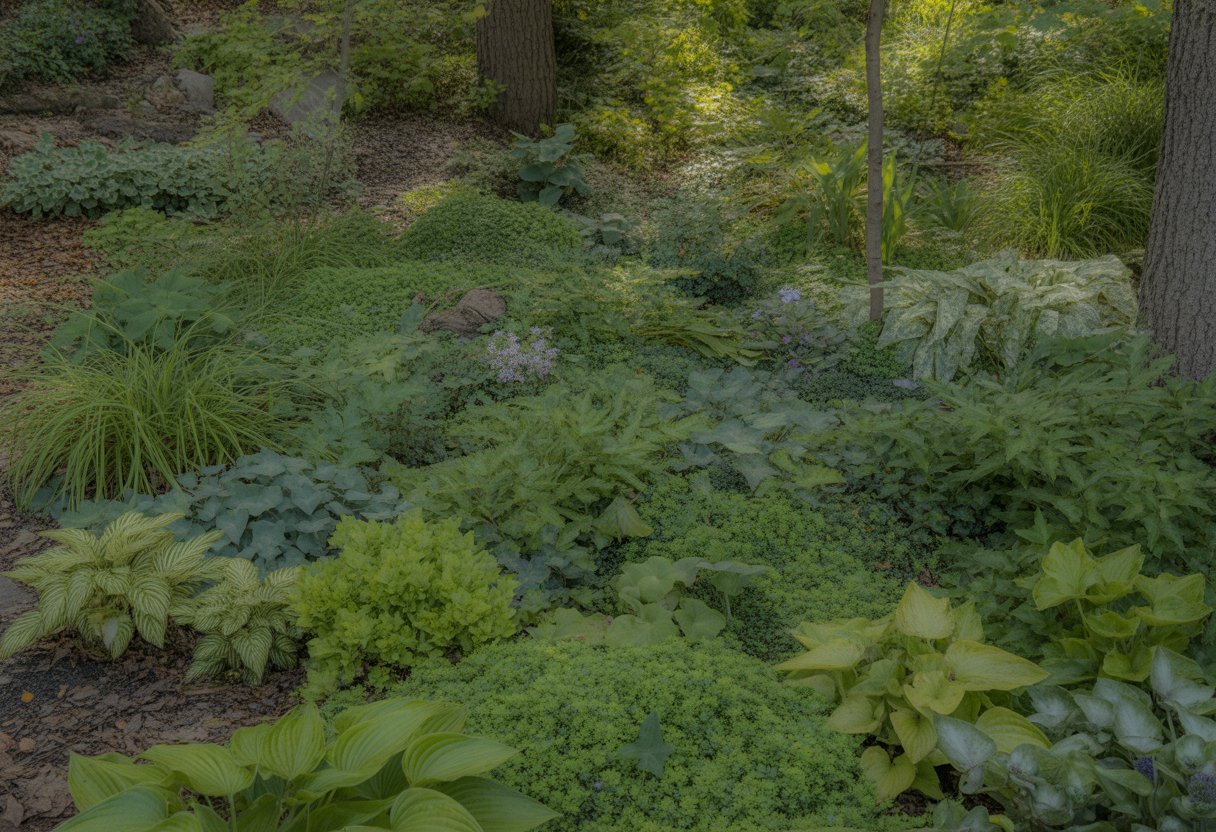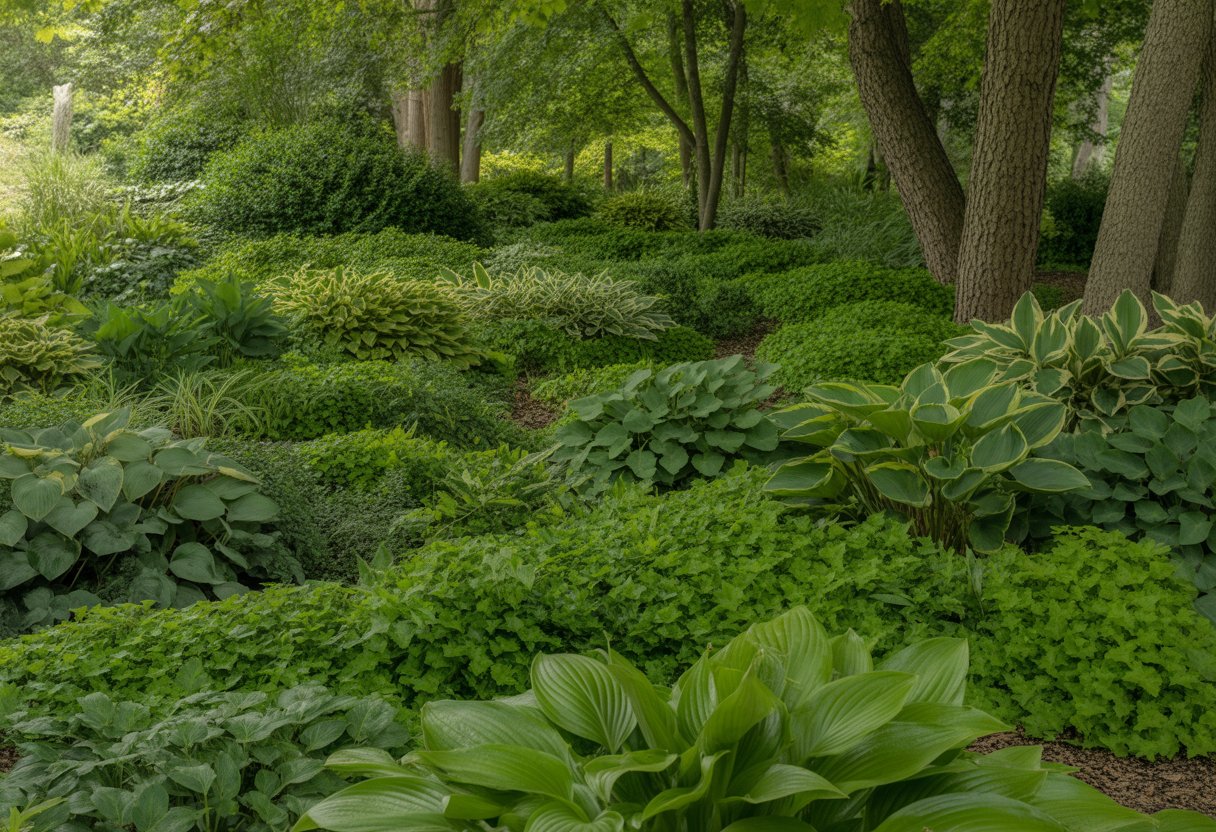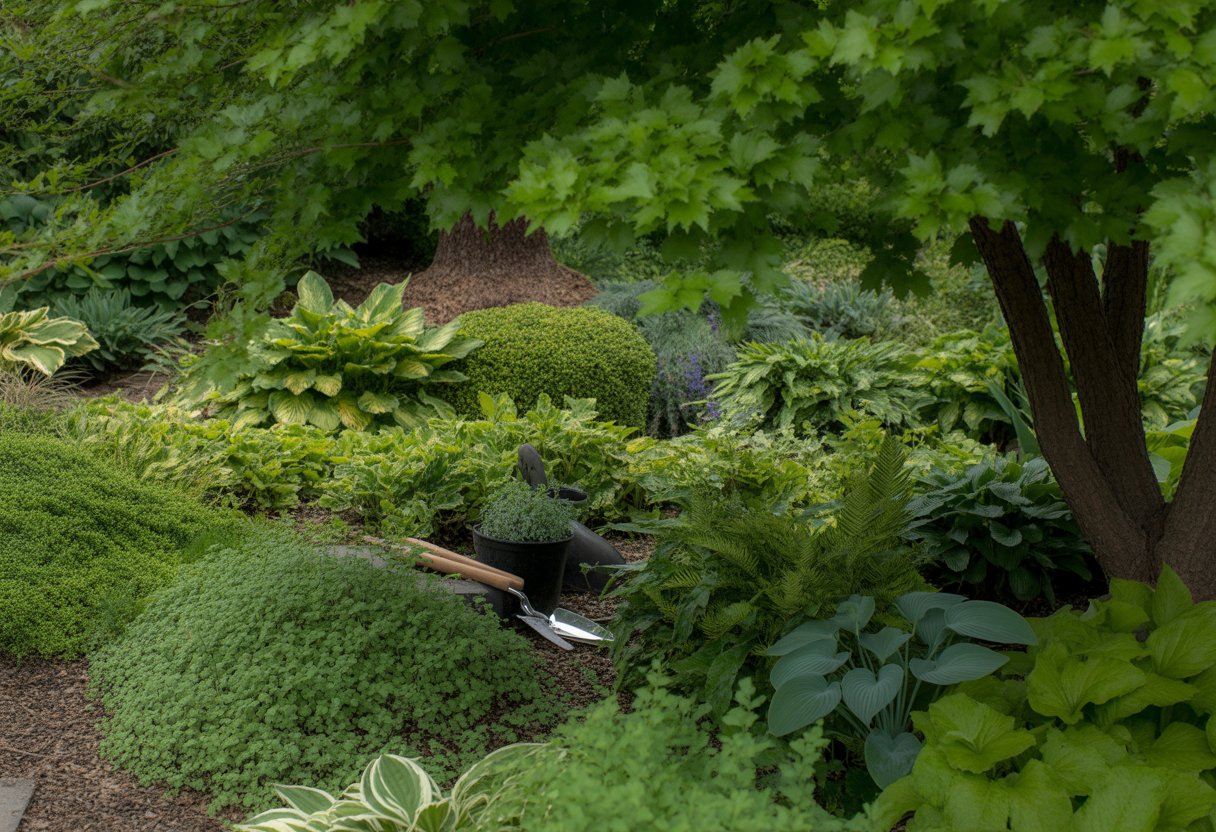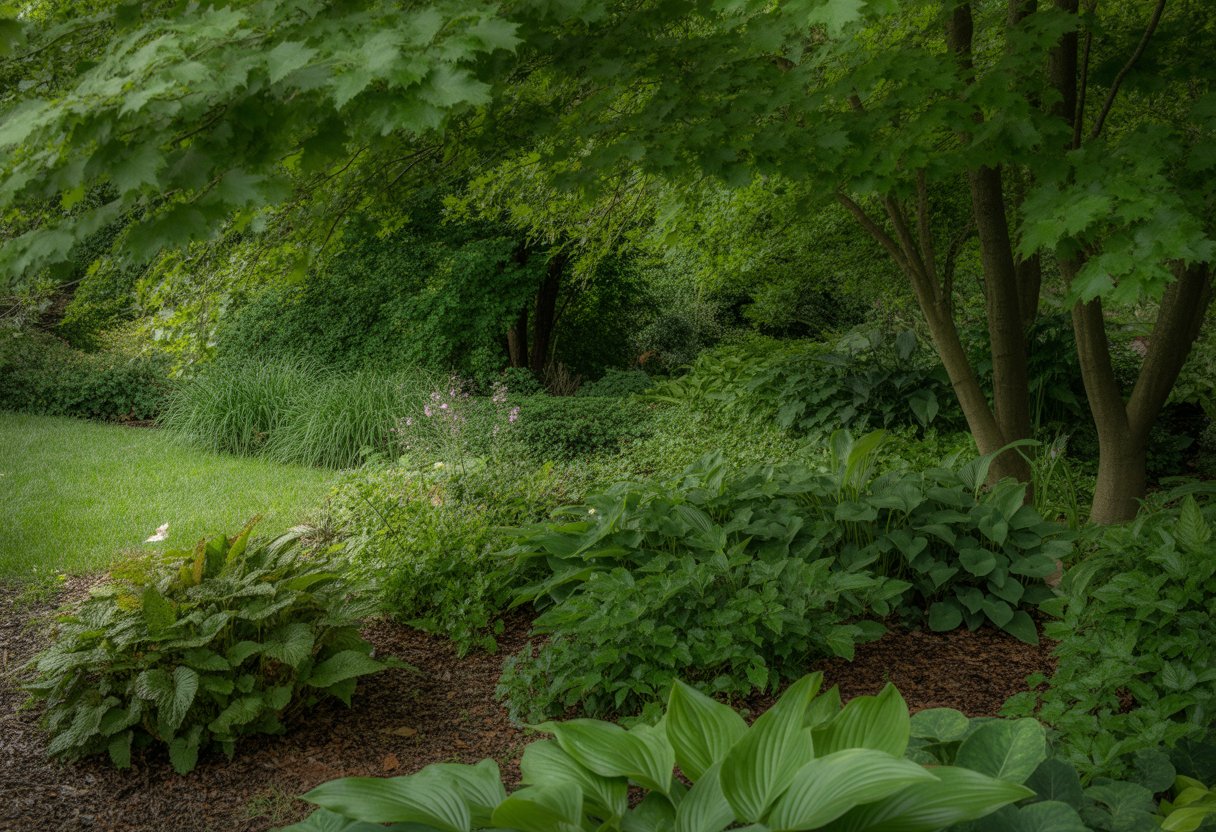Shade Loving Ground Covers Michigan: Best Varieties for Low-Light Gardens
Lots of Michigan gardeners struggle with shady spots where sunlight barely peeks through. Finding ground covers that actually like these conditions is key if you want green, healthy spaces without constant fuss.

Shade-loving ground covers like pachysandra, hosta, and vinca minor fit Michigan’s climate well. They offer reliable coverage even with minimal sunlight.
These plants help prevent soil erosion and cut down on weeds, which makes them pretty practical for shaded gardens.
Choosing the right variety depends on your soil, moisture, and just how much shade you’re dealing with. If you pay attention to those details, you’ll have a better shot at picking plants that actually thrive in Michigan’s unique conditions.
Best Shade Loving Ground Covers for Michigan

Michigan’s climate supports a surprising range of shade-tolerant ground covers. You’ll find options for all sorts of soils and moisture levels.
These plants bring color, texture, and help control erosion. They really lift up a shade garden.
Top Flowering Ground Covers
Flowering ground covers like lily-of-the-valley do well in Michigan’s shaded spots. You get small, fragrant white flowers in spring and they spread fast, filling out space under trees.
Packera aurea shows off bright yellow blooms from late spring to early summer. It handles both dry and moist soils and brings a pop of color to shady corners.
Corydalis and lungwort (Pulmonaria) offer early-season flowers in blue, purple, or pink. Both like moist, well-drained soil and add some seasonal flair to the garden.
Popular Foliage Ground Covers
Hostas are everywhere in Michigan shade gardens. They come in all sorts of leaf colors and textures, and they handle clay or loam soils well.
Heuchera brings in colorful foliage—think deep reds, purples, and greens, sometimes with neat veins. It’s happiest in partial shade and keeps things interesting all year.
Wild ginger (Asarum canadense) and Allegheny spurge spread out in low, dense mats. They’re great for weed control and keeping soil in place with hardly any work.
Grass and Sedge Varieties for Shade
Shade-tolerant grasses and sedges add texture and help stop erosion. Carex pensylvanica, a native sedge, thrives in dry to medium shade and forms nice grassy clumps.
Other shade-loving Carex species do well in moist soils and bring a fine texture to the landscape.
Liriope is a grassy ground cover that tolerates a lot, even in the shade. It produces small purple flowers in late summer, which is a nice bonus.
Ferns work well in shady areas, too. Their soft fronds and woodland vibe fit right in with Michigan shade gardens.
Planting and Care Tips for Shade Ground Covers

Picking the right spot and prepping the soil matter if you want healthy shade-loving ground covers. Good watering and mulching habits keep moisture in check and improve soil quality, which helps plants grow without attracting too many pests.
Site Selection and Soil Preparation
Look for garden areas that get little direct sun—under trees or next to buildings usually works. Soil should be rich in organic matter and drain well, especially for ferns and carex.
Check your soil’s pH; most shade ground covers like it a bit acidic to neutral (somewhere between 5.5 and 7). If your soil’s too heavy or sandy, mix in compost or leaf mold to help with texture and nutrients.
Clear out weeds and debris before planting anything. If you’re going for grasses or drought-tolerant covers, make sure the soil holds some moisture but doesn’t stay soggy.
Watering and Mulching Techniques
Water regularly when you first plant, but don’t overdo it—too much water can lead to fungus. Ferns usually need more water, but carex and some grasses get by with less once they settle in.
Spread about 2-3 inches of organic mulch, like shredded bark or leaf mold, to keep soil moist and temperatures steady. Mulch also keeps weeds down and improves the soil as it breaks down.
Check soil moisture every week. Shallow-rooted plants dry out faster, so you might need to water more during dry spells. Don’t pile mulch right up against plant crowns—give them a little breathing room to avoid rot.
Design Ideas for Shade Gardens in Michigan

Building a shade garden in Michigan means picking plants that can handle low light but still look good. Mixing different ground covers and matching them to your local conditions can really make a difference.
Combining Ground Covers for Texture and Color
Try mixing hostas, ajuga, and heuchera for a range of leaf shapes and colors. Hostas give you big, lush leaves, while ajuga forms low patches with deep purple tones. Heuchera adds pops of color from burgundy to lime green.
Ferns bring in fine, delicate textures that play off the bigger leaves. Sedum fits in well where there’s a bit more sun, adding succulent foliage and seasonal blooms. Mixing things up keeps the garden interesting all year.
Space your plants so they have room to grow—crowding isn’t great for anyone. Layer taller plants like hostas with low-growing wild ginger and carex pensylvanica for depth. It’s also a smart way to keep weeds at bay by covering the soil thoroughly.
Incorporating Native and Drought-Tolerant Varieties
When you pick native plants like packera aurea or carex pensylvanica, you’re giving your garden a real shot at thriving in Michigan’s unpredictable climate. These species just seem to get along with the local soil and weather.
Packera aurea throws in those cheerful yellow blooms that light up shady spots. Carex pensylvanica, on the other hand, forms these dense, soft green mats that honestly look good almost anywhere.
If you add drought-tolerant plants, you won’t have to drag the hose out as often—especially when summer gets stingy with rain. Wild ginger and tough little sedum varieties don’t fuss much if things dry out for a bit.
This kind of mix really helps with water conservation. Plus, it gives your garden stronger, healthier roots.
Native and drought-adapted ground covers do more than just look pretty; they actually help local wildlife stick around. Isn’t that the kind of garden most of us want?
